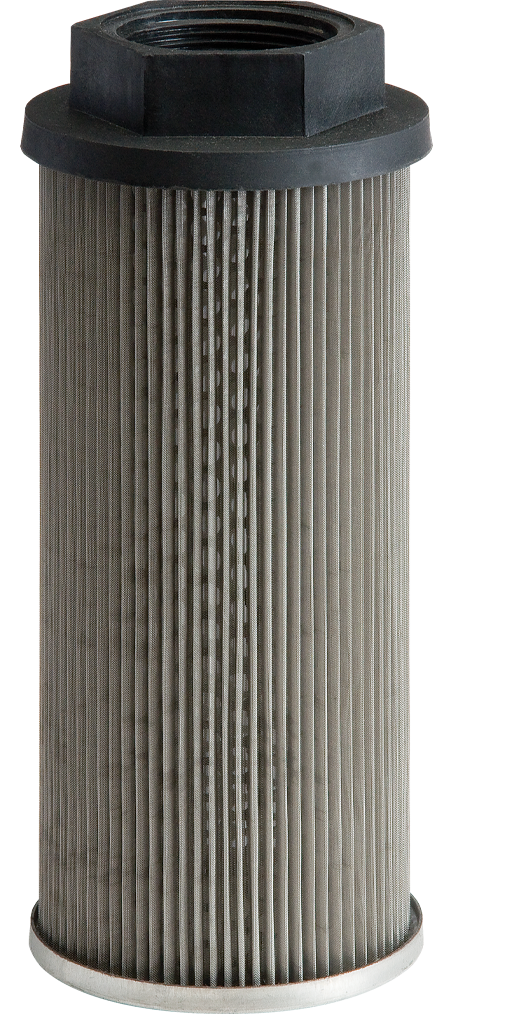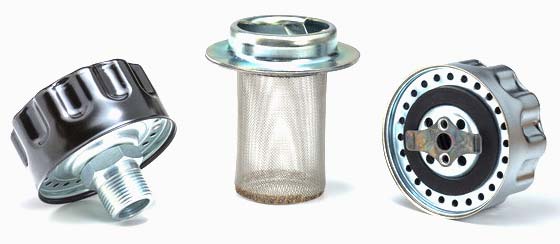Filtration has come a long way since the beginning of time. It goes all the way back to ancient times. Ancient Indo-European records refer to placing water in copper kettles, heating it, exposing it to sunlight, and running the water through charcoal. The idea of filtration goes back a long, long way.
 The development of science through the ages has brought us to the point where we not only filter solid particles but even molecules. The human eye can see no smaller than 40 microns, the human hair averages 50-70 microns in diameter and a grain of table salt is about 100 microns. If there is an area that some do not think of very much when designing and operating a hydraulic system, it is filtration and the placement of filters. Think about it for a moment—here you are with a $15,000,000 power system, or even a $10,000 car engine, the inlet filter plugs (if there is one), the pump cavitates, and there goes the system. The pump, being the heart of all power systems, is destroyed—all because of a simple, inexpensive, inlet filter, which was not maintained, or maybe one never existed in the first place. Too much resistance to flow creates considerable power loss and ineffectual operation, or equipment failure.
The development of science through the ages has brought us to the point where we not only filter solid particles but even molecules. The human eye can see no smaller than 40 microns, the human hair averages 50-70 microns in diameter and a grain of table salt is about 100 microns. If there is an area that some do not think of very much when designing and operating a hydraulic system, it is filtration and the placement of filters. Think about it for a moment—here you are with a $15,000,000 power system, or even a $10,000 car engine, the inlet filter plugs (if there is one), the pump cavitates, and there goes the system. The pump, being the heart of all power systems, is destroyed—all because of a simple, inexpensive, inlet filter, which was not maintained, or maybe one never existed in the first place. Too much resistance to flow creates considerable power loss and ineffectual operation, or equipment failure.
There needs to be proper filter placement if a system is going to operate at peak performance. When installing filters at different locations there are many variables to consider, too. What is the system trying to achieve? What is the end product? How fine of filtration should there be at these locations to be effective? Are tight tolerances required in the operation? What is the outside environment like? Is it hot, humid, inside, or outside? What is the flow rate of the pump? What is system pressure? The list of considerations goes on. There are many factors involved when sizing and installing proper filtration devices to the system. In general terms, there are four locations where some sort of filter should be placed.
 Cross Reference Guide
Cross Reference Guide
 Cross Reference Guide
Cross Reference Guide The development of science through the ages has brought us to the point where we not only filter solid particles but even molecules. The human eye can see no smaller than 40 microns, the human hair averages 50-70 microns in diameter and a grain of table salt is about 100 microns. If there is an area that some do not think of very much when designing and operating a hydraulic system, it is filtration and the placement of filters. Think about it for a moment—here you are with a $15,000,000 power system, or even a $10,000 car engine, the inlet filter plugs (if there is one), the pump cavitates, and there goes the system. The pump, being the heart of all power systems, is destroyed—all because of a simple, inexpensive, inlet filter, which was not maintained, or maybe one never existed in the first place. Too much resistance to flow creates considerable power loss and ineffectual operation, or equipment failure.
The development of science through the ages has brought us to the point where we not only filter solid particles but even molecules. The human eye can see no smaller than 40 microns, the human hair averages 50-70 microns in diameter and a grain of table salt is about 100 microns. If there is an area that some do not think of very much when designing and operating a hydraulic system, it is filtration and the placement of filters. Think about it for a moment—here you are with a $15,000,000 power system, or even a $10,000 car engine, the inlet filter plugs (if there is one), the pump cavitates, and there goes the system. The pump, being the heart of all power systems, is destroyed—all because of a simple, inexpensive, inlet filter, which was not maintained, or maybe one never existed in the first place. Too much resistance to flow creates considerable power loss and ineffectual operation, or equipment failure.